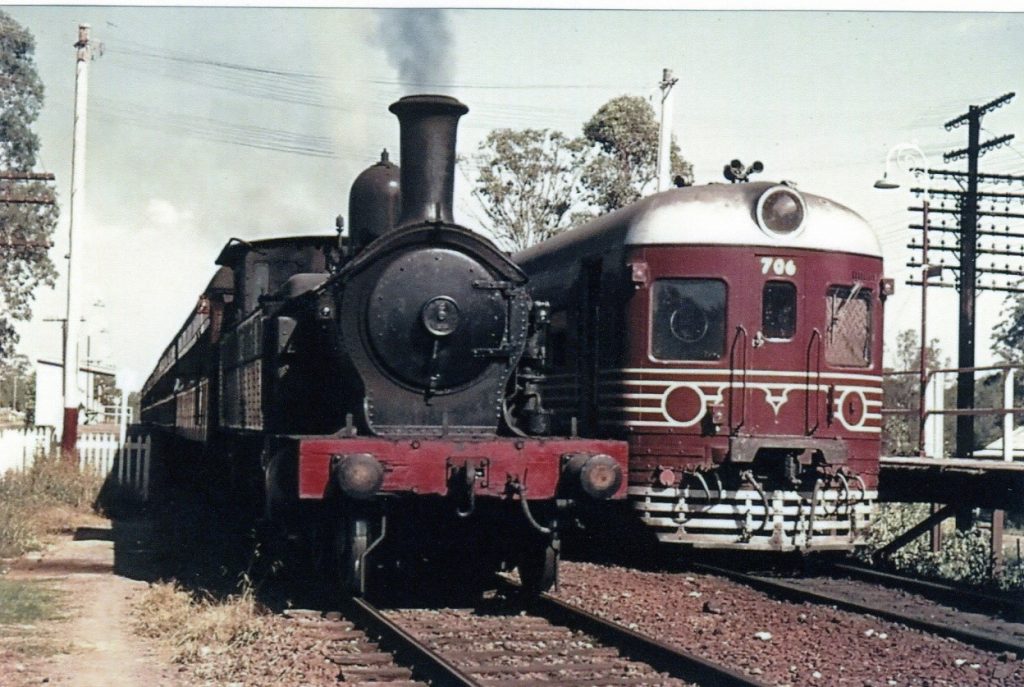by Alan Strachan
Clarence Irving Magennis was born in 1884. He married Chrissie Pearce (daughter of Frederick Arthur Pearce and Emma) in 1911 and they established a boarding house at 16 George Street Riverstone. This house was small and constructed of part slab and weatherboard.
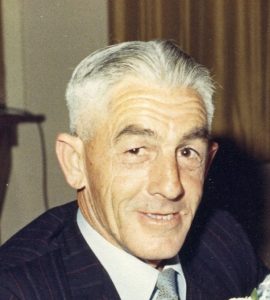
There were six children of the marriage:- three girls and three boys. Lucy, Margaret, Norma, Hector, Noel (Eric Noel) and Ken who was the youngest. All of the children were born at the Riverstone home, Ken on 6 November 1927.
Ken Magennis recalls that when he was five or six years old his parents asked him what he wanted to be when he grew up. Ken replied “I’m going to be an engine driver”.
Like the other members of the Magennis family, he went to the Riverstone Public School. Leaving Riverstone School in 1939, Ken then attended the Westmead Technical High School. In 1942 he left school at the age of 14 years and 8 months. His mother told him that he was not going to work at the Riverstone Meatworks like the others, but for him to get a Government job.
Ken recalls his first job was at the old Post Office at the Riverstone Railway Station in 1942. As a matter of interest, in 1877 the Riverstone Post Office had been established at Riverstone Railway Station. A Post Office with Station Master Mr C. Burge in charge was established on 1st January 1977. When this Office was opened, Mr C. C. Burge of Riverstone Railway was in charge. Later, in 1886 Mr Kirwan was appointed Post and Telegraph Master in charge of a combined Post and Telegraph Office, which was still conducted in Railway premises.
Ken worked two years [1942-1943] at the Old Riverstone Post Office and during his time there took the mail to the Station Master. The Station Master advised Ken to join the Railway because there was more money than working at the Post Office. Ken obtained an application form to join, but his mother told him that he was not joining the Railway and for him to stay put at the Post Office!
Ken recalled that at the Old Riverstone Post Office, there was a Lever Switch Board and he worked at night. He actually worked a night and day job. Night-Shift commenced at 10.00pm to 7.00am. There was a bed set up in the small room and an alarm clock on the Switch Board. When Ken finished his shift at 7.00am, he went home and came back to start the day shift from 8.00am to 6.00pm. At the Riverstone Railway Station, Ken also worked the signal box.
After 17 years (1925-1942) of persistent representations by the people of Riverstone, through their Progress Association and other public bodies the official opening of the handsome new Riverstone Post Office took place on Saturday, 27 February 1943, a brick structure standing on the north – western corner of Garfield Road East and Pitt Street.
When the new Riverstone Post Office was opened in 1943 Ken was the first Junior to work at the new building. Prior to leaving the old Post Office, the Station Master told Ken that if he worked on locomotives and became a train driver that there was quick promotion on the Railways. Jack Meridith, the Assistant Station Master at Riverstone filled in the application form for Ken Magennis.
Ken recalls he worked at the new Riverstone Post Office for two years and in 1945, he was transferred to work at the Richmond Post Office. He caught the train from Riverstone to Richmond and worked 7.00am to 6.00pm at night. Ken recalled that they tried to teach him the Morse Code Board, but he was only there for two months, as the application form that he had submitted for a job on the New South Wales Government Railways had come through.
Ken successfully passed the entrance examination into the New South Wales Government Railways (NSWGR), and on 31 May 1945, at the age of seventeen and a half years, commenced as a Junior at Enfield Yards as a Junior Engine Cleaner – working three shifts on a seven day week. He caught the train to and from Riverstone to work at the Enfield yards.
Late in 1945, Ken qualified as a Trainee Engineman. Then in August 1947, he was appointed Fireman. Between 1947 and 1952 he worked as a Fireman on the seven mile (11.265 Km) Richmond-Kurrajong Line. He worked on both goods and passenger trains which were hauled by 20 Class Locomotives.
Ken recalled that the Kurrajong bound train, known as the “Pansy” would sit at the Kurrajong platform on the northern side of the main Sydney platform at Richmond Station. When the train arrived from Sydney with passengers travelling to Kurrajong, they would alight and crossing the platform boarded the train to Kurrajong. This section of line was curved, and after crossing safely over East Market Street, the train then went through parkland at the side of Richmond Oval on its way to Kurrajong.
The Kurrajong Line officially closed on 26 July 1952 after a landslide and wash-away, due to heavy rains, made the line impassable. The high cost of repairs required to the track and the line’s unprofitability were the official arguments used for the closing of the line.
Following the closure of the Kurrajong Line, Ken Magennis continued to work as a Fireman on the Richmond Line, working on goods and passenger trains to Blacktown and Sydney. Then in 1953, he was appointed as a Class 5 Engine Driver and drove steam engines hauling both goods and passengers to and from Richmond to Blacktown, Parramatta and Sydney / Central Stations.
Ken rode his bicycle to and from his parents home in George Street Riverstone, to commence his shift at the Richmond Train Depot, a 35 km round trip. In later years, he progressed onto a two-stroke motor cycle and then onto a motor car. As Fireman, he would get the Fire-Box in the engine started well before the driver arrived, and the train was due to depart.
Sadly, Ken’s mother passed away at the age of 60 years on 1 June 1947.
In 1949, Kenneth Howard Magennis married a local Riverstone girl, Zela Johanna Crozier, at St. Joseph’s Cathedral, Parramatta. Zela’s parents were Irvin John and Marie Crozier. Their marriage produced three children:- (1) Grahame Kenneth (2) Russell and (3) Gail. When Ken and Zela married they lived in the old house, but in later years (1958) built a new fibro and tile house next door to the original home.
Ken recalls the Railway signalling that was used on the line. The Staff Keys (small) were used from Richmond, and were changed at Clarendon, Windsor, Mulgrave. Mulgrave to Riverstone the large Staff Key was used. At Riverstone, the steam engine took on water from the large water tower/tank situated at the south-east corner of the main platform (No.1). The large staff keys were used from Riverstone, and changed at Quakers Hill to Blacktown.
I made mention of the Staff Keys, whilst looking over the Staff Key Holder at the Riverstone & District Historical Society’s fine display of 150 years of the Richmond Branch Line on Sunday 2 November 2014. Ken Magennis was quick to point out that he had handled many hundreds if not thousands in the 22 years that he was a Fireman and a Engine Driver on the Richmond Line.
I mentioned to Ken a story from the 1960s, when I was waiting to catch a morning steam train at Riverstone to Sydney. The Station Master had a Staff Key (large type) to allow the train to proceed along the next section of track and stood in front of his office on the platform. The Fireman in the steam engine had to change over the Staff Key that had allowed the train safe passage between Mulgrave and Riverstone. The Fireman held the long metal Staff Key at the top allowing the lower part to be taken by the Station Master. The change over involved two Staff Keys changing hands between the Station Master and the Fireman. On this occasion the Station Master immediately dropped his Staff Key which fell onto the platform. The Fireman had placed the handle part of the Staff Key into boiling water within the engine! The Fireman’s half of the Staff Key being cool, but the other half of the Staff Key being extremely hot, which caused the Station Master to drop it.
Ken was quick to point out that there were several so called jokes played on the Station Master at the stations along the Richmond Line. Ken recalled another trick by the Fireman was to grease and oil the bottom half of the Staff Key, causing it to slip out of the hand of the Station Masters or other Railway staff whilst changing the Staff Key.
Ken often worked with the same Fireman and other mates from the Richmond Depot. He also knew another Riverstone Train Driver for 26 years, and that driver was Kevin Flynn who lived on the corner of Garfield Road East and McCulloch Street, Riverstone.
Ken drove the early morning and afternoon Steam Trains from Richmond, through to Central Country Stations – Platform Numbers 1 – 2 – 3 and 9. Ken recalled that upon arrival at Central the locomotive would be removed and a fresh coaled and watered-up locomotive would be picked up from Eveleigh and driven back in reverse (tender first) through the ‘Dive’ which was an underground tunnel which ran under the roads. This tunnel had brick chimneys to allow the smoke created by the steam engines to escape. The engine came through Redfern and reversed back onto the eight carriages standing at Central, for the return journey back to Richmond Depot.
Ken recalls the times he drove the 5.40pm Richmond bound train out of Central – Monday to Friday. The ‘P’ Class locomotive would generally haul eight carriages but sometimes 30 Class Tank Engines were put into service. Arriving at Redfern with the Down passenger train heading to Richmond, a race would start between the electric trains and the steam hauled train to Strathfield. Between Burwood and Petersham the race was in full flight, until the trains approached Strathfield and they backed off to stop at the station. Ken recalls that the ‘P’ Class engines mostly won these races.
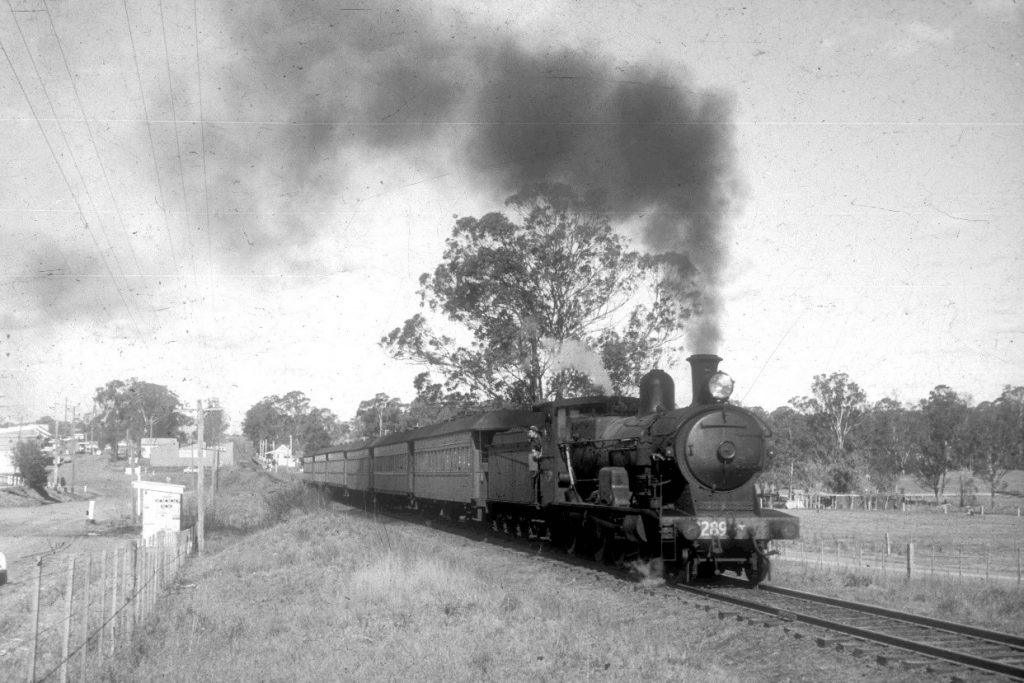
There were two wooden trestles on the Richmond Line. One traversing the South Creek, better known as the Mulgrave viaduct, between Mulgrave and Windsor, and the other crossing the Chain of Pond’s or Rickaby’s Creek at Windsor, between Windsor and Clarendon. When he was driving trains over these viaducts, the speed of four miles per hour applied to these two trestles for all trains. However, some train drivers went over these wooden trestles more quickly than others.
I recall in my High School days at Richmond, catching the 8.10am School Train from Vineyard to Richmond in 1957-58, the steam train drivers really ploughed over both trestles in the morning and afternoon. When the floods were on and the water from South Creek was lapping just below the top sleeper, the drivers slowed right down just crawling over the wooden trestle. The South Creek viaduct was always the worst affected by the flood waters. Most of the school children stood on the platform of the carriages to look at the flood waters whilst the train crossed over the viaduct. We were always glad to reach Mulgrave station.
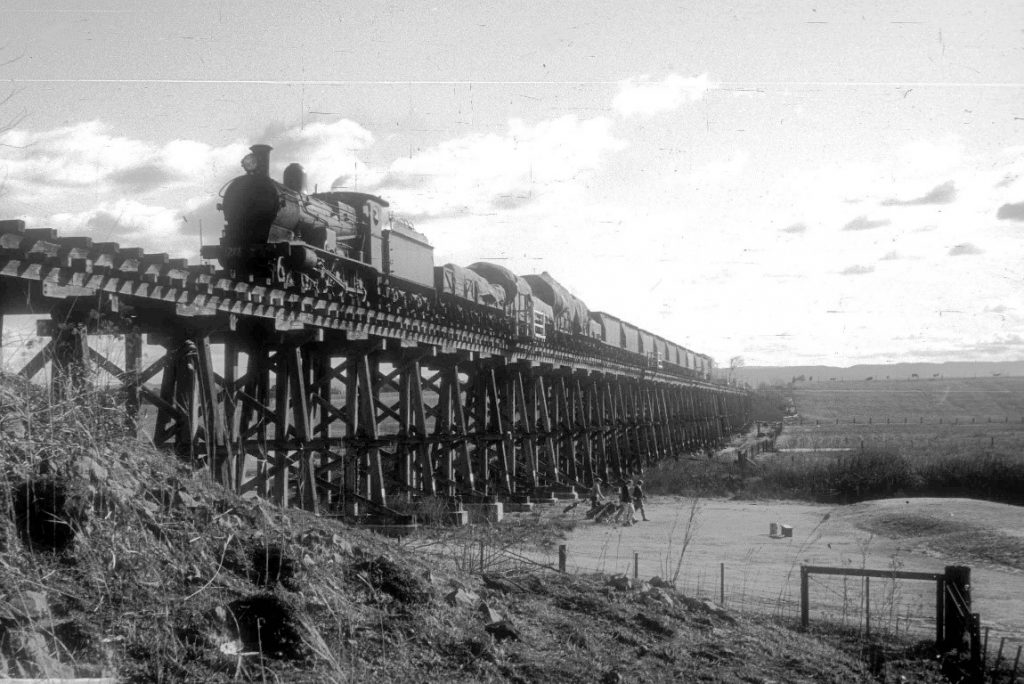
Ken recalled the good mates he worked with over the years as Fireman and Engine Driver. The Firemen that he worked with whilst driving steam engines /trains on the Richmond Line were – Thomas Dunlea, Ted Seckold, Jacky Cullen, Neville Irving. Andy Baczynskyj and his son Michael also worked with Ken on steam trains. Other Firemen who worked at Richmond were:- Noel Watkins and Noel Parveez. Fireman Colin Watkins and Driver Frank Breen drove the last steam train out of and return to Richmond on Saturday 25 October 1969. Ken Magennis drove steam trains on the Richmond Line for 16 years [1953 – 1969], both passenger and goods services.
After the withdrawal of Steam trains on the Richmond Branch Line, Ken then trained and drove the CPH Rail Motors or ‘Tin Hares’ on the line. These Rail Motors were first operated on petrol and the driver had to change gears. They were later converted to Diesel. In the 1970s he drove the 600 Class, the 620 Class Rail Motors.
Ken recalled that the 600 Class had a battery start and owing to the short running, the battery would go flat at Blacktown. Later air starts were installed. He remembers that during the cold winter months, the 600 Class could not be started in the early mornings at Richmond. The fuel simply froze, and to overcome the situation, a bucket of hot water was used to melt the ice. The Driver would then push the start button again and the motor would start. The CPHs, 600 Class and 620 Class were the only Rail Motors worked on the Richmond Line. The 620 Class was an improvement on the 600 Class. Ken Magennis drove them all. At the Richmond Depot, there were two bowsers and two overhead fuel tanks that held between 1500 and 2000 litres of diesel for use in the CPHs, the 600 Class and 620 Class Rail Motors.
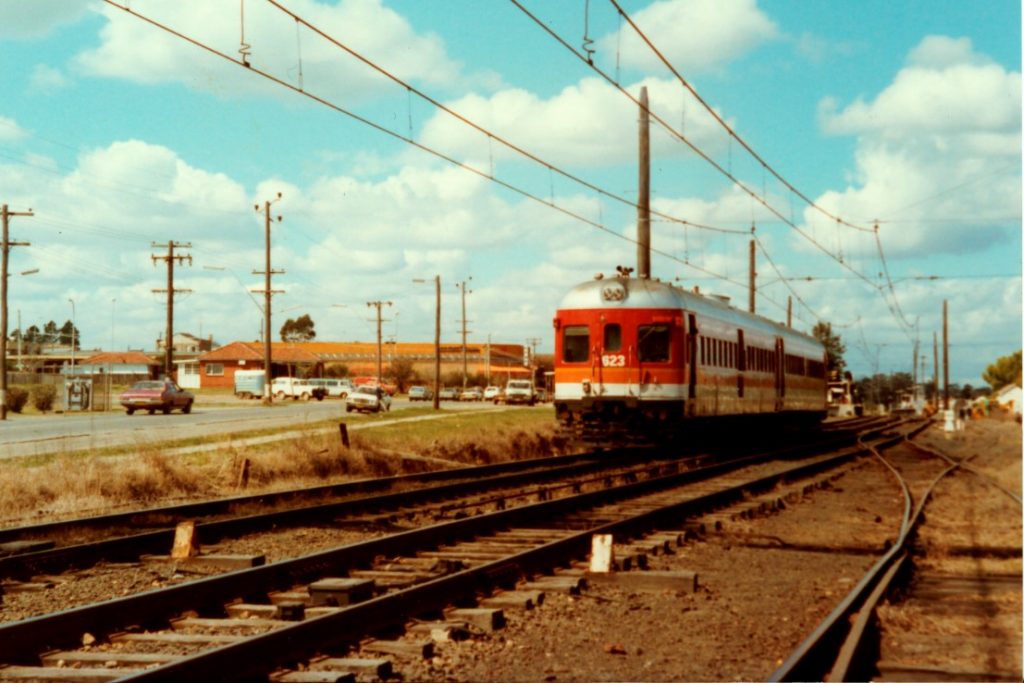
Ken also drove the 48 Class Diesel Locomotives during the five years they worked on the line from (1969 – 1975), hauling passenger train services to and from Richmond, and working goods trains. Chris Shilling (now train Driver / Richmond) recalls working on many occasions as a Fireman on goods trains when Ken was driving the 48 Class Diesel Locomotives on shunting duties at the Blacktown Sidings to Marayong. The Sidings consisted of a Stock Siding, Chicago Bridge Company, the Norco co-operative, a long Master Siding, which was brought into use between Blacktown and Marayong on 6th April 1975. The other sidings were for Woolworths, David’s Holdings, Doulton Potteries, Portland Cement, Marbright (Martin Bright) Steel Sidings and Hickson Siding.
Chris Shilling recalled that on one occasion, whilst working with Ken, a car broke down on the railway crossing. The driver of the car was concerned about moving his car off the tracks before the next train came. Ken Magennis said to him, “I bet I can move your car off the tracks and there will be no cost involved”. Meaning that he would give it a gentle shove with the 48 Class Locomotive. Eventually, a tow truck arrived on the scene and moved the car.
Sadly, Ken’s father Clarence passed away on 8 December 1976 – aged 92 years.
On 22 May 1975 the electrification of the Richmond Line between Blacktown and Riverstone was officially opened when the first electric train arrived at platform No. 1 at Riverstone Station. The electric trains operated between Sydney and Riverstone, and the 600 and 620 Class operated on shuttle services between Richmond and Riverstone. Passengers wishing to travel to Richmond had to change at Riverstone. Ken was the first driver to arrive at the new Dock Platform with a 620 Class Rail Motor Set on that day.
Ken continued driving the CPHs and the 600 and 620 Class Rail Motors on the shuttle run between Richmond and Riverstone for 12 years. He drove trains on the Richmond Line until he retired in January 1988. A good innings at 42 years of working with NSWGR and 35 years on the Richmond Line (1953 – 1988).
When Ken finished up on the New South Wales Railway he was awarded a ‘Citizen’ brand gold wrist watch and band – engraved on the back with the words ‘K. H. Magennis 42 years’. Today, Ken wears this watch with great pride and still has very fond memories of driving trains on the Richmond Branch Line, and most importantly, the mates he worked with over the years.
Ken recalled that he has had a good life, but had a few ups and downs. Sadly, his wife of 31 years, passed away in 1980. His daughter Gail married Claude Sullivan. His son, Grahame married Joy West. Grahame sadly passed away on 10 January 2005.
Kenneth left Riverstone in 1992 to live on the Central Coast of New South Wales. He had lived at Riverstone for 65 years. His son Russell still resides in the family home in George Street in 2015.
On Sunday 2 November 2014, Ken travelled down from the Central Coast and attended the Riverstone and District Historical Society Inc. Museum which celebrated 150 Years Centenary of Sydney/Richmond Line with a fine open day display. This display attracted well over 200 visitors, and was thoroughly enjoyed by all those who attended, including Ken. Four days later, Kenneth Howard Magennis celebrated his 87th birthday.
